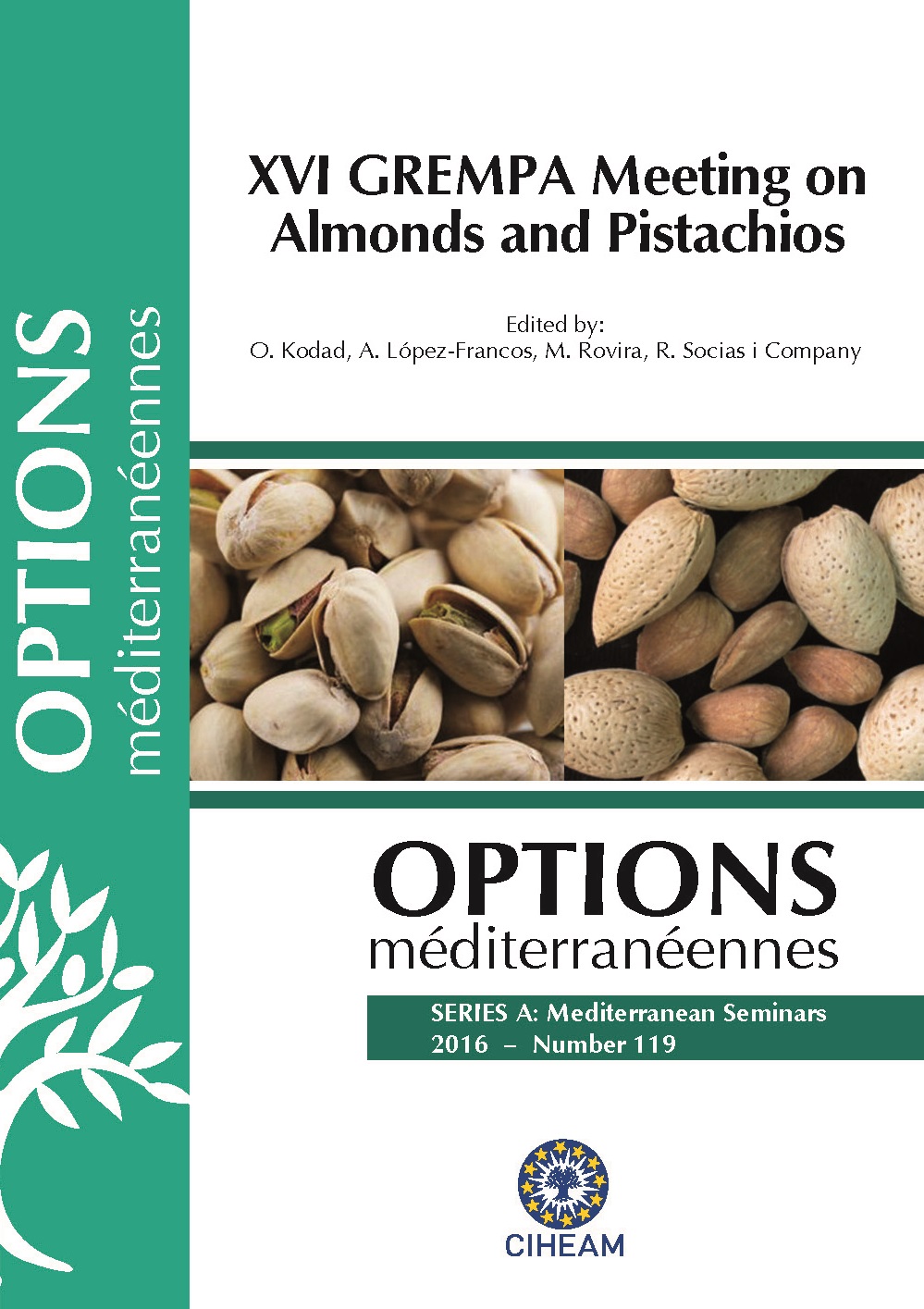| Article précédent | p. 291-296 | Article suivant |
Valorisation of local almond genotypes regarding their biochemical and mineral compositions
The new tendency for intensification of almond plantations has induced a clear neglect of local ecotypes and cultivars that have proved high performances and good adaptation to many biotic and abiotic stresses. Prospecting the main producing regions in Tunisia has demonstrated a high genetic diversity. In addition, all of the pomological, biochemical and mineral characterizations have confirmed the potentialities of some local genotypes in comparison to the newly introduced cultivars. The analysis of their content in some biochemical compounds such as antioxidant has furthermore shown that some landraces are highly rich in α, γ and δ-tocophérols. Our result reported that the mineral composition of this nut is dominated by phosphor, calcium, iron, sodium, zinc and copper. In comparison to some introduced cultivars such as ‘Mazzetto’, ‘Lauranne’ and ‘Supernova’ many local ecotypes presented high performances. In fact the ecotype ‘BF2’, was highly rich in potassium and phosphor while ‘TL7’ in calcium. Additionally, the dominance of ‘khoukhi’, ‘Dillou’ and ‘Blanco’ for the iron element composition is another statement in favour of existent possibilities for a better valorisation of the local germplasm and consequently for its better preservation.
La tendance actuelle vers l’intensification des plantations d’amandier a induit une nette négligence des variétés et des écotypes locaux. Ceux-ci ont montré des potentialités agronomiques très intéressantes ainsi que des niveaux satisfaisant de tolérance à divers stress biotiques et abiotiques. Les travaux de caractérisation pomologique, biochimique et minérale ont prouvé les performances de ces individus vis à vis des variétés introduites comme ‘Mazzetto’, ‘Lauranne’ et ‘Supernova’. En effet, l’analyse du contenu des fruits en antioxydants a montré la richesse de certains écotypes en α, γ and δ-tocophérols. D’autre part, nos résultats ont confirmé que la composition minérale des fruits d’amandier est dominé par les éléments phosphore, calcium, fer, sodium, zinc et cuivre. D’ailleurs, les fruits de l’écotype ‘BF2’ sont remarquablement riche en potassium et en phosphore. De plus, la richesse en élément fer des écotypes du nord comme ‘khoukhi’, ’Dillou’ et ’Blanco’ sont tous des arguments en faveur de la possibilité d’une meilleure valorisation des ressources génétiques d’amandier en cosmétique et dans l’industrie alimentaire ainsi que leurs conservations.
- [ Afficher ]
- [ Télécharger ]
- [ Exporter la citation ]
Vous pouvez télécharger la citation au format :
- [ Imprimer ]
-
Mots-clés
ACIDE GRAS, ANTIOXYDANT, ECOTYPE, PRUNUS DULCISCiter cet article
Gouta H., Khelifa R., Laaribi I., Mechri B., Molino F., Estopañán G., Juan Esteban T. Valorisation of local almond genotypes regarding their biochemical and mineral compositions. In : Kodad O. (ed.), López-Francos A. (ed.), Rovira M. (ed.), Socias i Company R. (ed.). XVI GREMPA Meeting on Almonds and Pistachios. Zaragoza : CIHEAM, 2016. p. 291-296. (Options Méditerranéennes : Série A. Séminaires Méditerranéens; n. 119). 16. Meeting of GREMPA (Groupe de Recherches Méditerranéennes pour l\'Amandier et Pistachier / Mediterranean Research Group for Almond and Pistachio), 2015/05/12-14, Meknes (Morocco) . http://om.ciheam.org/om/pdf/a119/00007410.pdf



